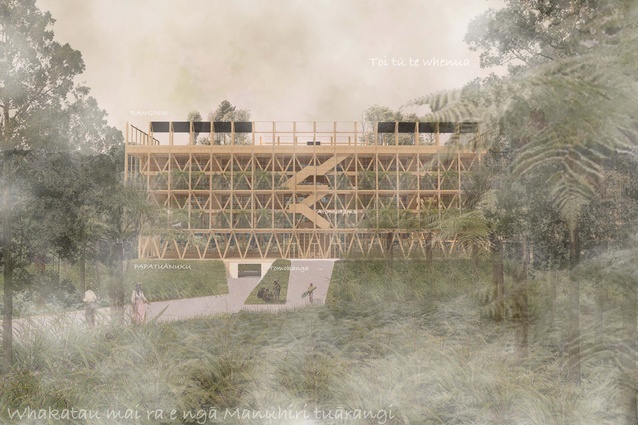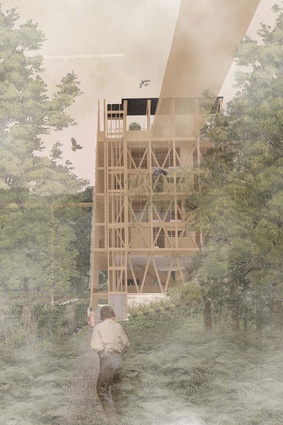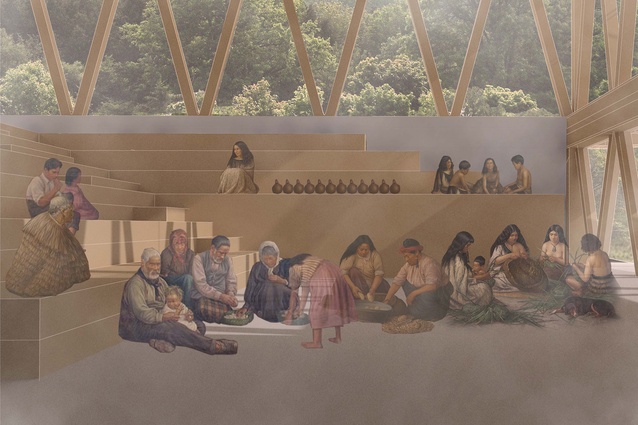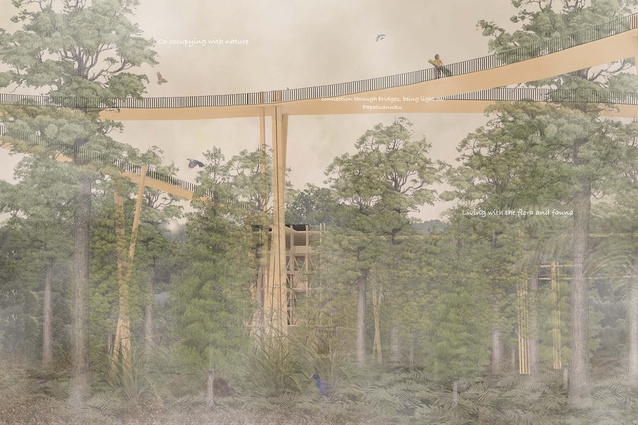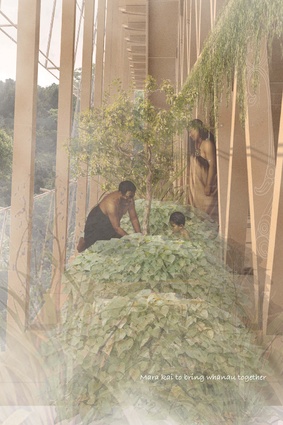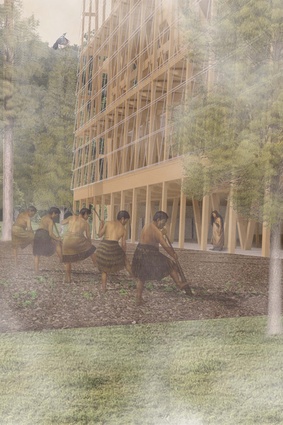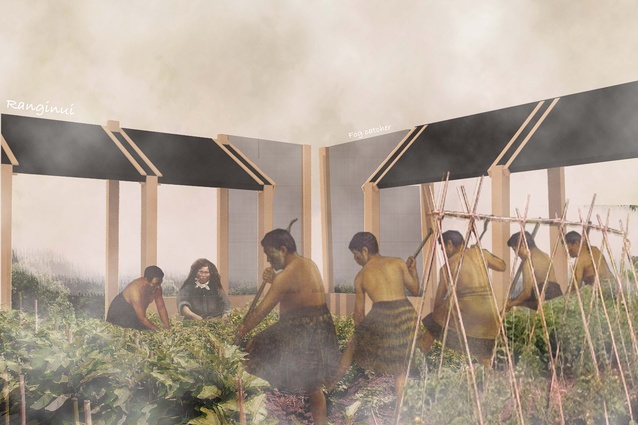Nurturing the life-force of Papatūānuku
The 2022 Te Kāhui Whaihanga Resene Student Design Awards winner, AUT MArch (Prof) student Matangireia Yates Francis (Te Arawa, Te Aitanga-a-Mahaki, Rongowhakaata, Ngāti Maniapoto), describes his project Tūhononga, in which he sees a shift towards true Māori-centred architecture potentially aiding the survival of our planet.

Tūhononga was born from the devout belief in a Māori cultural world view and the understanding of the unique connection Māori philosophy holds with the natural environment, from the sky to the land and all between. The research within Tūhononga binds the current contemporary context with ancestral principles of living as a guiding foundation for the health and prosperity of environments, now and in the future, found within the intergenerational oral traditions regarding the customs of pā — traditional Māori living. Such understandings hold intrinsic foresight of the potential conditions humankind may harness to indigenise, environmentalise and refocus the way we occupy the earth in a Māori perspective, with benefit to all.
“The proverb “Whatungarongaro te tangata, toitū te whenua, Man disappears from sight, yet the land remains” formed the basis of my thesis research into traditional Māori living customs that were centred around environmental protection, for, without our land, we are nothing and will be nothing.”
- Matangireia Yates-Francis.
Simply translated, Tūhononga refers to the spiritual and physical connection between humankind and the natural environments we occupy, holding such ecologies and the well-being of the natural world as paramount.
The proverb “Whatungarongaro te tangata, toitū te whenua, Man disappears from sight, yet the land remains” formed the basis of my thesis research into traditional Māori living customs that were centred around environmental protection, for, without our land, we are nothing and will be nothing. The present Anthropocene crisis further reaffirms the need to change the ways humans presently occupy the earth and return to the long-established systems our ancestors pioneered within pā and papakāinga.
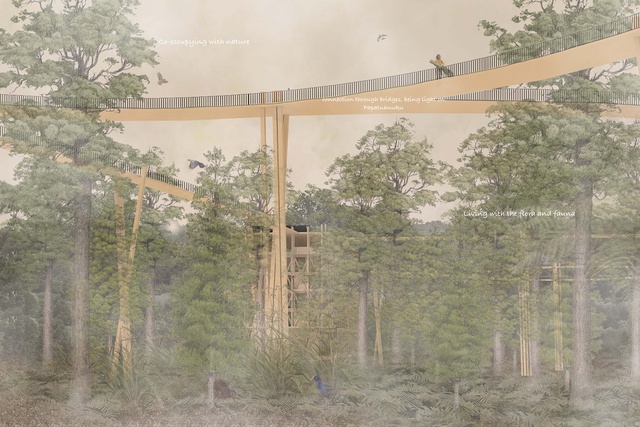
We must continue to seek aspiration for the health of the natural environment, welcome a nature-centred way of life and nurture the life-force of the primordial mother, Papatūānuku.

Tūhononga is situated between Ranginui and Papatūānuku, utilising both sky and land resources to reconnect those occupying the pā to the natural rhythms of the environment. The land-based aspects of the pā require occupants to work with the earth to become a fully self-sustainable community, focused around māra kai, traditional food sovereignty practices. The pā walls themselves are built from hempcrete, the hemp for which is envisioned to be grown at the pā. A central communal kitchen and dining hall allows occupants to partake in collective food preparation and build kinship with the pā through food. The site location began with a reforestation project that serves to protect and shelter the pā but also native birds, flora and fauna.
From ground to sky, we move upward to the living quarters, the bosom of the pā that shelters and sustains its occupants. The housing sites are located in the central column and are wrapped by a green band, which houses vertical garden beds. It is a mistake to think that, because the living is vertical, you are not able to connect with the land, with Papatūānuku; however, garden beds provide space to reconnect further and learn customary food gardening practice. Thanks to the abundance of rich soils in Rotorua, I aspire to relocate the garden beds within the pā. Because of the external cloak façade of the pā, occupants can connect further with other external elements, such as the wind, allowing further opportunity to engage with the environment.
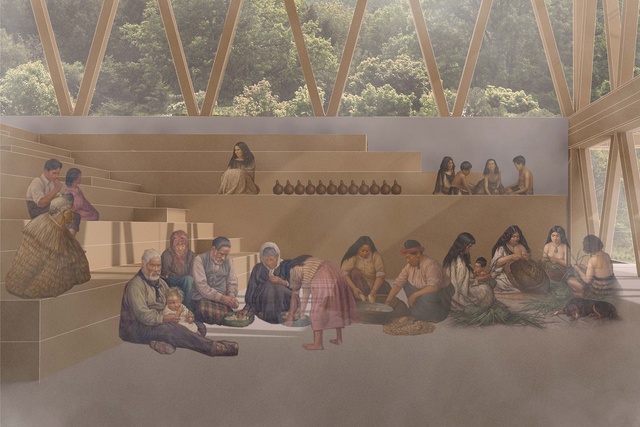
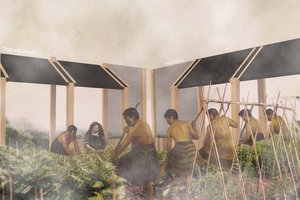
From the ground to the skies, we move to the domain of Ranginui, the primordial father situated at the apex of the pā. Here, the pā is connected to the weather, notably wind and rain, and it utilises grey-water rain catchment systems to recycle and redistribute water to the pā. Occupants can also reconnect with sky, forest and native wildlife while walking amongst the raised pathways between the vertical living structures, bringing a deeper kinship with the natural environment from a higher perspective, while decreasing the foot traffic on the ground floor.
This higher space also serves to re-establish traditional star observation, Matariki offering and celebrations and maramataka practices, allowing occupants to gather and re-learn traditional Māori astrology and time, with hopes to return to a synchronicity with nature.
The essence and purpose of this research is to challenge current architects and organisations. It is hoped that Tūhononga may provide a platform for positive improvements, to create a shift toward true Māori-centred architecture and showcase the integrity and boundless potential our knowledge holds for the architectural profession and the survival of our planet.
More on previous award winners here.
For more information go to Te Kāhui Whaihanga New Zealand Institute of Architects.

